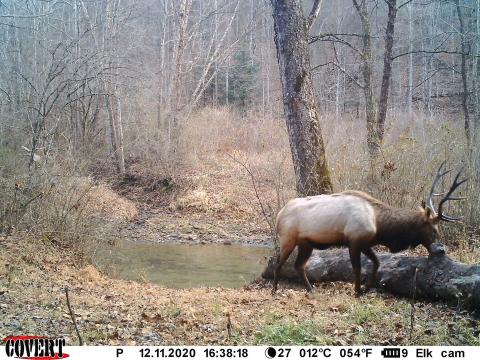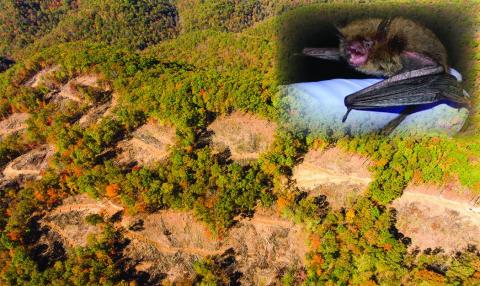Wildlife
Wildlife at Robinson Forest
UK Department of Forestry and Natural Resources has a variety of exciting projects involving rare and declining wildlife species – primarily birds (game birds and non-game birds) and pollinators (bees, butterflies, etc.). One large effort is aimed at informing the conservation of northern bobwhites, Kentucky’s only quail species, across pine forest across the eastern US. This effort has involved banding and radio-tagging hundreds of bobwhite chicks and adults and monitoring survival rates, breeding productivity, and movement patterns. Beyond game birds, we have also initiated a new study to examine the movement patterns of eastern forest birds – especially the eastern whip-poor-will and scarlet tanager – to better understand how forest management (especially timber harvest) affects these birds’ movement patterns. Do whip-poor-wills and scarlet tanagers shift their movement patterns in the presence of timber management? And do these birds’ movements suggest that habitat is enhanced by timber management? Stay tuned for more.
Learn more about Wildlife Research Activities.
Several wildlife research activities are conducted at Robinson Forest. To learn more about elk, bats, snakes and other wildlife, please visit the UK Forestry and Natural Resources website.
Visit the Forestry and Natural Resources Website.Elk
Elk were common to the eastern U.S. prior to 1800, but hunting and other pressures caused their demise. There is now significant interest and activity in reintroducing elk to many states to provide recreational and economic opportunities and return an important species to the ecosystem. In the absence of large predators like the gray wolf, rapid population growth of elk in states like Kentucky have posed challenges to management of this wide-ranging species, particularly where high population densities occur. Populations must be managed to ensure that recreation and economic opportunities are sustained while minimizing negative impacts to the environment and humans.
McIntire-Stennis supported research at the University of Kentucky Department of Forestry and Natural Resources aims to quantify important aspects of reintroduced elk populations that are important in managing the species in the Appalachian region. Research is also characterizing the ecological impacts of elk including the browsing of tree seedlings that impedes the regeneration of native forests and reclaimed surface mines, spread of invasive species, and human-elk interactions.

Bats
Effect of Silvicultural Treatments on Vertical Stand Structure in Forested Ecosystems of the Appalachian Mountain Region: Implications for Foraging and Roosting Behavior of Myotis Bats during the Staging, Maternity, and Swarming Seasons
Principal Investigators:
Michael J. Lacki, Jeffrey W. Stringer, and John M. Lhotka; Department of Forestry, University of Kentucky, Lexington, Kentucky
Summary:
Presently nine species of eastern North American cave-dwelling bats are known to be affected by white-nose syndrome (WNS), a debilitating disease believed to have already caused the death of 6.7 million hibernating bats. Most of these species largely maintain themselves in forested environments during the growing season where quality foraging habitats are essential for: building body mass for winter hibernation; maintaining and improving health, especially if recovering from WNS infection; and, most significantly, successfully rearing young. Foraging habitat of bats can be altered by forest management activities, such as timber harvesting, by creating new patterns in tree retention across landscapes, and subsequently impacting the existing canopy density and structure. This study evaluates options for sustainable timber harvesting that differentially affect the distribution and amount of canopy structure available for foraging bats; the goal of the project being to identify harvesting techniques that are compatible with or result in positive changes to foraging habitats of Myotis bats, including species vulnerable to WNS. Specifically, the study is designed to test harvest options that alter the quantity and spatial distribution of tree retention consistent with both sustainable timber harvesting practices and maintenance or improvement of foraging habitat of Myotis bats.

